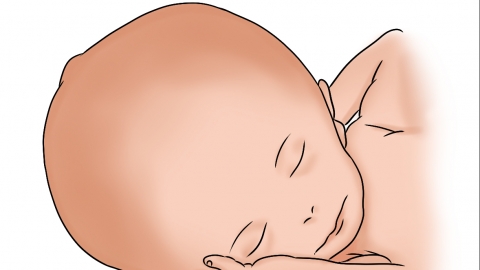What is cerebral palsy?
Cerebral palsy generally refers to brain damage that occurs during fetal development or infancy, leading to motor and posture disorders. Under normal circumstances, cerebral palsy may be caused by factors such as immature fetal brain development, developmental risks in preterm infants, neonatal hypoxic-ischemic encephalopathy, bilirubin encephalopathy, central nervous system infections, and others. If experiencing any discomfort, it is recommended to seek medical attention promptly. Detailed explanations are as follows:
1. Immature Fetal Brain Development
During the fetal stage, if the developing brain is affected by insufficient nutrient supply or other factors, the structural and functional development of brain tissue may be incomplete, increasing the risk of cerebral palsy. During pregnancy, adequate nutrient intake should be ensured by consuming foods rich in protein, vitamins, and minerals, such as fish, eggs, and fresh vegetables. Regular prenatal checkups should be conducted to detect fetal developmental abnormalities and take appropriate measures promptly. After birth, closely monitor the infant's growth and development, especially motor and intellectual development.
2. Brain Development Risks in Preterm Infants
The brains of preterm infants are not yet fully developed, and their cerebral vascular regulation is poor, making them more susceptible to brain injury from various factors, which may lead to cerebral palsy. After birth, preterm infants should receive specialized care in a neonatal intensive care unit (NICU), with close monitoring of vital signs and brain development. Parents should cooperate with medical staff regarding feeding and care for the preterm infant, conduct regular developmental assessments, and intervene promptly when abnormalities are detected. Based on the infant's condition, early rehabilitation training should be carried out under medical guidance to promote brain development.

3. Neonatal Hypoxic-Ischemic Encephalopathy
Oxygen or blood supply deprivation before or after birth can cause brain tissue damage, impairing normal brain development and potentially leading to cerebral palsy, often accompanied by symptoms such as altered consciousness and abnormal muscle tone. Prompt resuscitation is necessary to improve the hypoxic-ischemic condition, and neurotrophic medications such as Cytidine Diphosphate-Choline Sodium Injection, Ganglioside Sodium Injection, and Cerebroprotein Hydrolysate Injection may be used under medical guidance to promote recovery of brain cells. Once the condition stabilizes, rehabilitation therapy should begin as soon as possible, such as passive limb exercises and sensory stimulation, to reduce long-term complications.
4. Bilirubin Encephalopathy
Excessively high bilirubin levels in newborns that are not treated timely can lead to bilirubin entering brain tissue and causing damage, possibly resulting in cerebral palsy, accompanied by symptoms such as persistent jaundice and drowsiness. Once abnormal jaundice is detected in a newborn, prompt medical attention should be sought, and phototherapy should be administered under medical guidance. In some cases, medications such as Human Albumin Injection or Sodium Phenobarbital Injection may be required to lower bilirubin levels. After treatment, regular monitoring of brain development should be performed, along with targeted rehabilitation therapy.
5. Central Nervous System Infections
Infections caused by bacteria, viruses, or other pathogens in newborns can lead to central nervous system infections, such as purulent meningitis, which can damage brain tissue and potentially cause cerebral palsy, often accompanied by symptoms such as fever, seizures, and vomiting. Under medical guidance, anti-infective medications such as Ceftriaxone Sodium for Injection, Penicillin Sodium for Injection, or Acyclovir Injection should be administered to control the infection. At the same time, medications such as Mannitol Injection may be used to reduce intracranial pressure and alleviate brain damage. After infection control, timely rehabilitation therapies such as motor training and speech therapy should be initiated to improve the child's functional abilities.
In daily life, it is important to maintain proper prenatal care to avoid infections and trauma during pregnancy. After birth, ensure warmth and proper care for the newborn to prevent infections.




